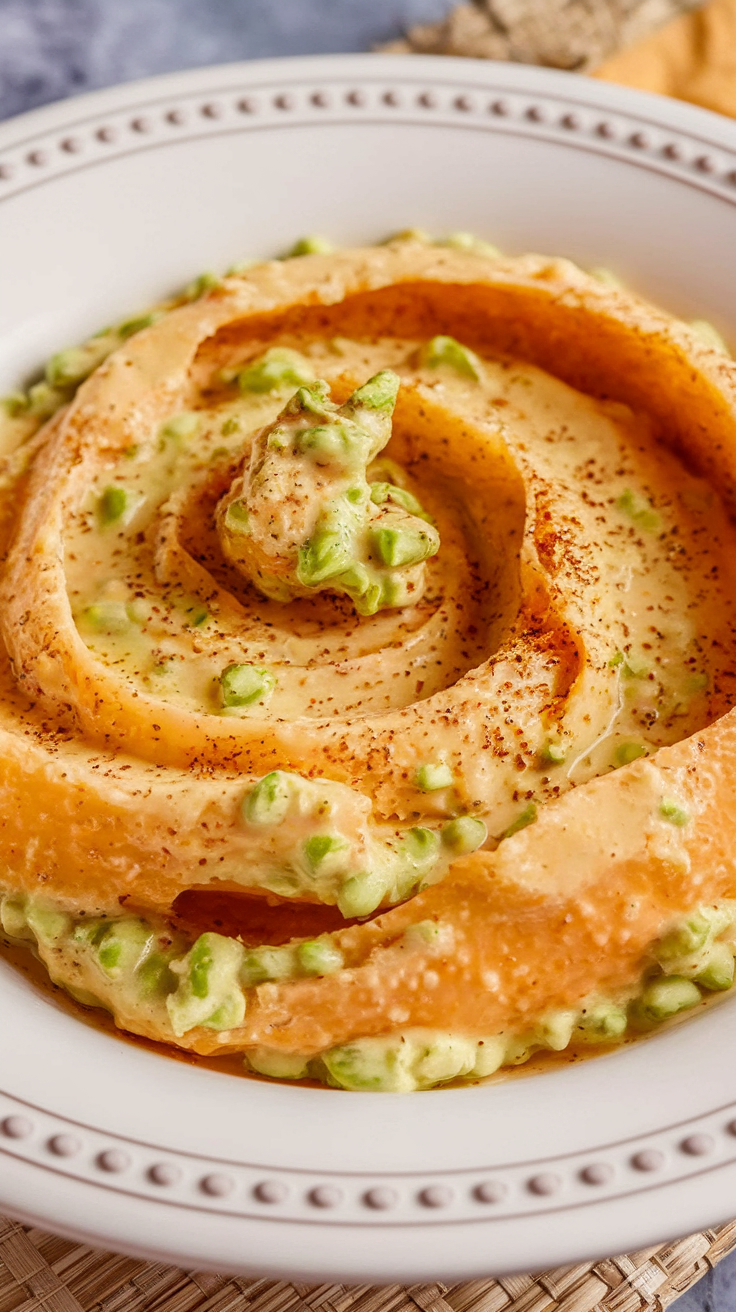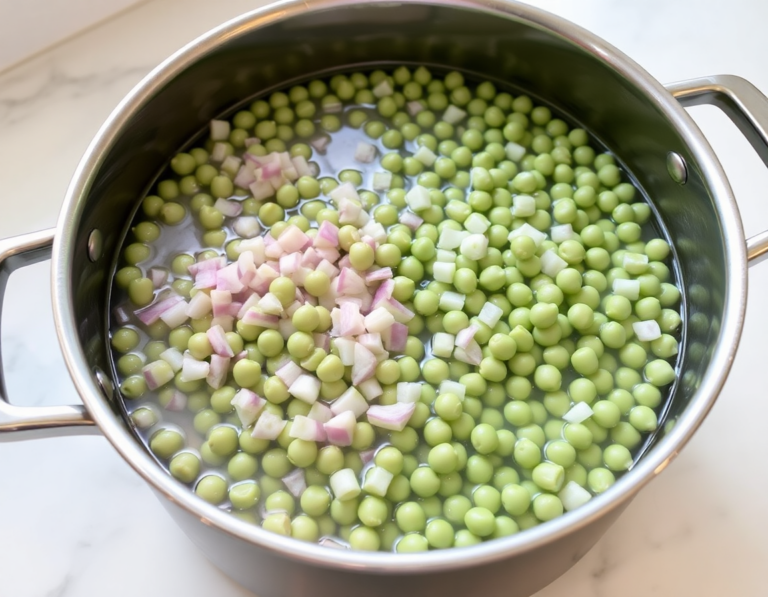Have you ever tasted sunshine in a bowl? That’s what this Greek Fava feels like—warm, comforting, and a little bit like a Mediterranean holiday right in your kitchen. I remember stumbling upon this dish during a summer trip to Santorini, and oh, how it lingers in my memory, like the scent of olive trees on a breezy afternoon.
Steps
- Inspect the yellow split peas to remove any that are discolored, then rinse them thoroughly.
- Place the washed split peas and chopped onion into a large saucepan, adding enough water to cover them by a few inches.
- Bring the mixture to a boil, then lower the heat and allow it to simmer for 30 to 45 minutes, ensuring the peas become thick and mushy. Add more water if necessary during cooking.
- Once cooked, drain any excess water if present, and transfer the peas to a bowl.
- Mix in the crushed garlic, lemon juice, and olive oil, stirring until the mixture is thick and well combined.
- Allow the fava to cool before seasoning with salt and pepper to your taste. Garnish with paprika, and optionally drizzle with olive oil before serving.
Ingredients
- 1/2 pound dried yellow split peas
- 1 medium brown onion, chopped
- 1 small clove garlic, crushed
- Juice of 1/2 lemon
- 1 teaspoon olive oil
- Salt and black pepper, to taste
- Paprika, for garnish
- Additional olive oil, for drizzling
Nutritional Values
Calories: 860 kcal | Carbohydrates: 148 g | Protein: 56 g | Fat: 8 g | Saturated Fat: 4 g | Polyunsaturated Fat: 4 g | Monounsaturated Fat: 4 g | Sodium: 40 mg | Potassium: 2412 mg | Fiber: 60 g | Sugar: 24 g | Vitamin A: 340 IU | Vitamin C: 20 mg | Calcium: 156 mg | Iron: 12 mg
FAQ
- What are the main ingredients in Greek fava?
- Greek fava primarily consists of yellow split peas, a medium brown onion, a small clove of crushed garlic, lemon juice, olive oil, salt, and black pepper. Paprika and additional olive oil can be used for garnishing.
- How is Greek fava traditionally served?
- Greek fava is typically served cold as part of a mezze platter, accompanied by other small dishes. It is often garnished with a drizzle of olive oil, a sprinkle of smoked paprika, and sometimes an olive placed on top.
- Is Greek fava made with fava beans?
- Despite its name, Greek fava is not made with fava beans. Instead, it is prepared using yellow split peas.
- What is the cooking process for Greek fava?
- To prepare Greek fava, rinse the yellow split peas and combine them with chopped onions in a saucepan. Cover with water, bring to a boil, then simmer until the peas become thick and mushy. Mix in garlic, lemon juice, and olive oil until well blended, then season with salt, pepper, and garnish as desired.
- Why is Ikaria referred to as the “Island Where People Forget to Die”?
- Ikaria is known for having a high number of centenarians, individuals who live to be over 100 years old. The island’s lifestyle, which includes a diet rich in homemade foods and a relaxed pace of life, is believed to contribute to this longevity.
Tips
- Ensure you thoroughly rinse the yellow split peas and pick out any discolored ones before cooking, as this will improve the overall taste and texture of your Greek fava.
- Keep an eye on the water level while the peas simmer, adding more if necessary to prevent them from drying out before they become mushy.
- After cooking, if there’s any excess water, make sure to drain it off to achieve the right consistency for the dip.
- For an authentic touch, drizzle some olive oil on top and sprinkle with paprika before serving, and consider adding an olive in the center for a traditional garnish.
Equipment
- Large Saucepan – For boiling the split peas and onions.
- Mixing Bowl – For transferring and mixing the cooked ingredients.
- Fork or Potato Masher – To beat and blend the ingredients together into a dip consistency.

